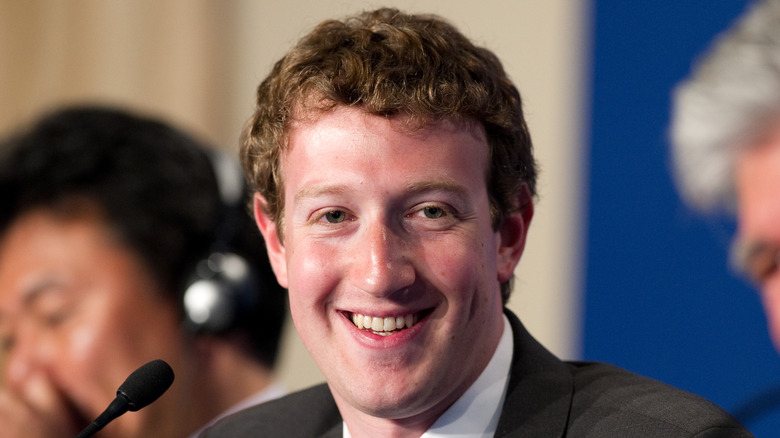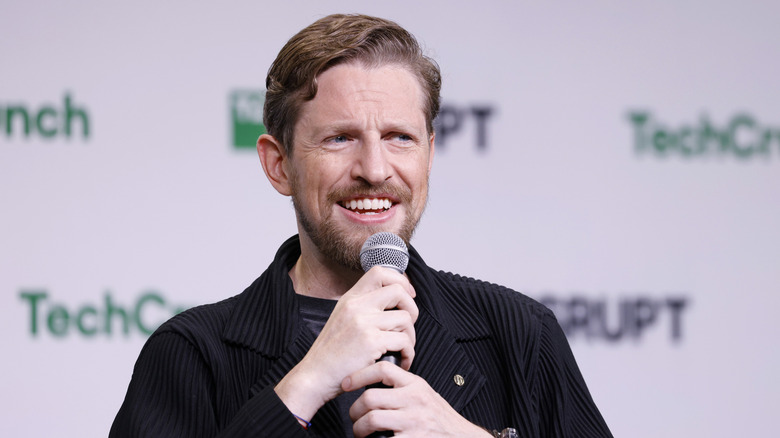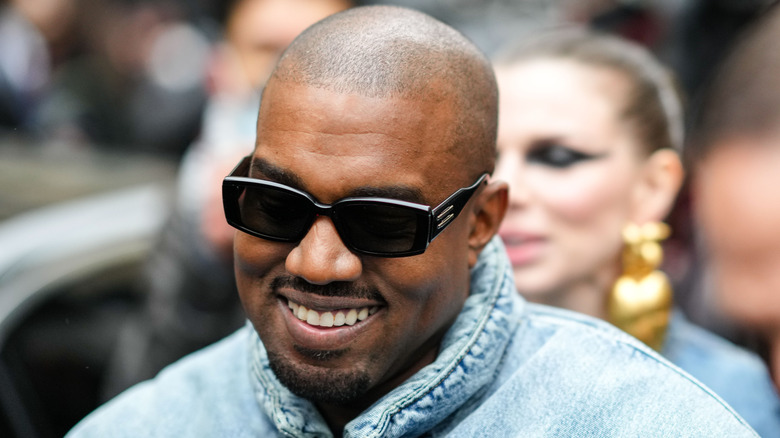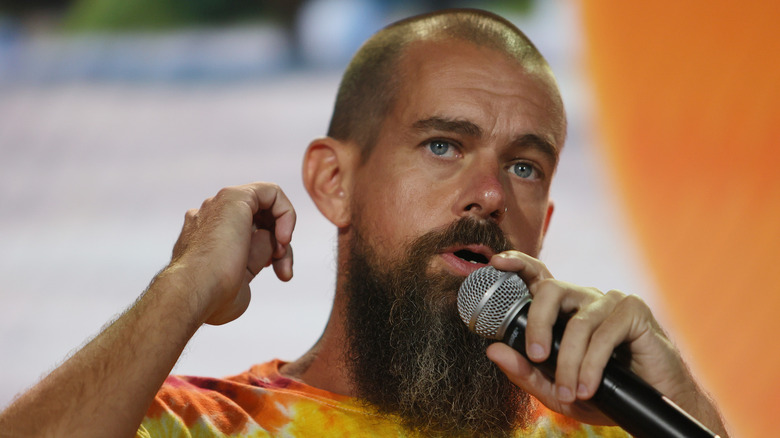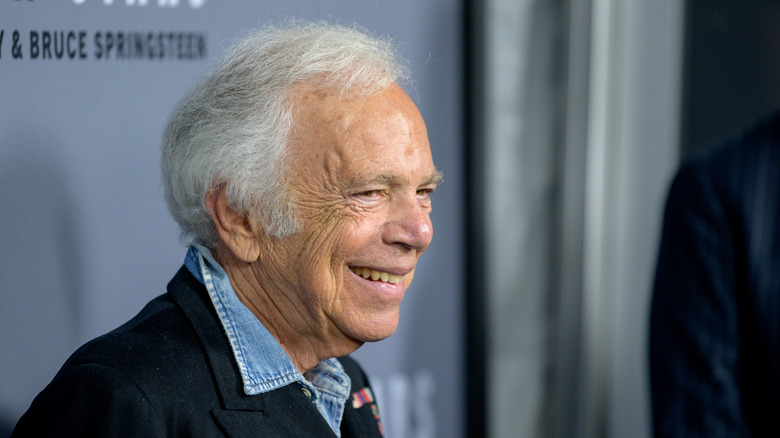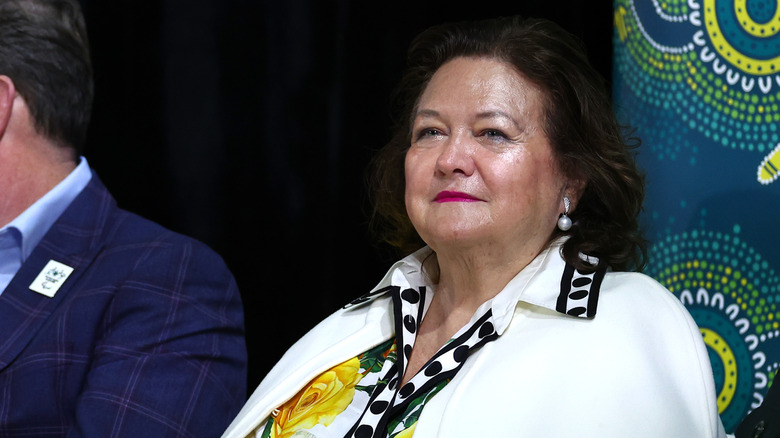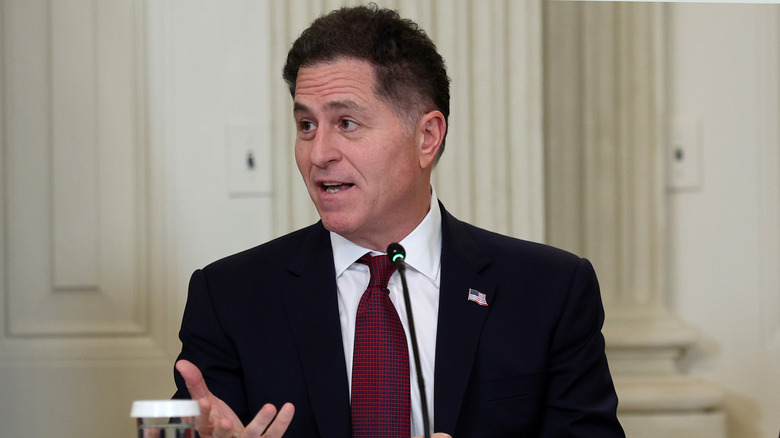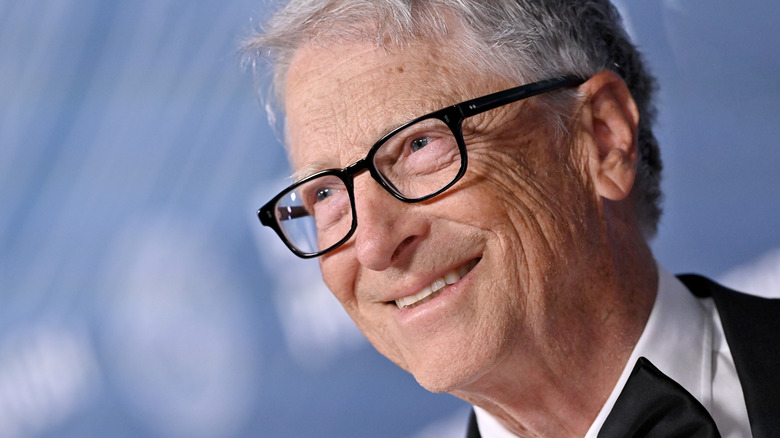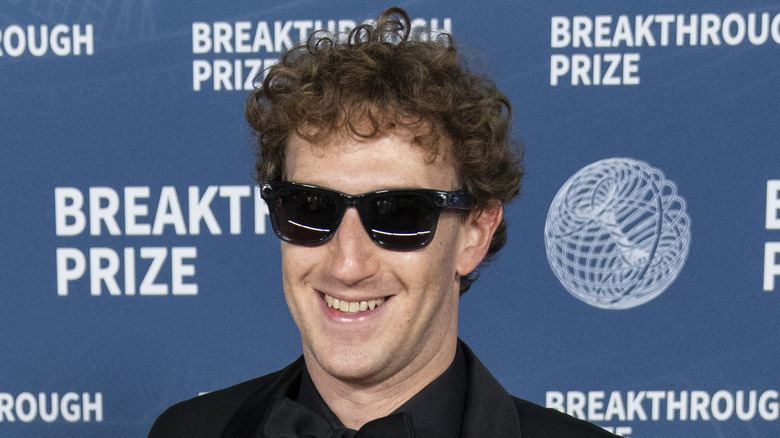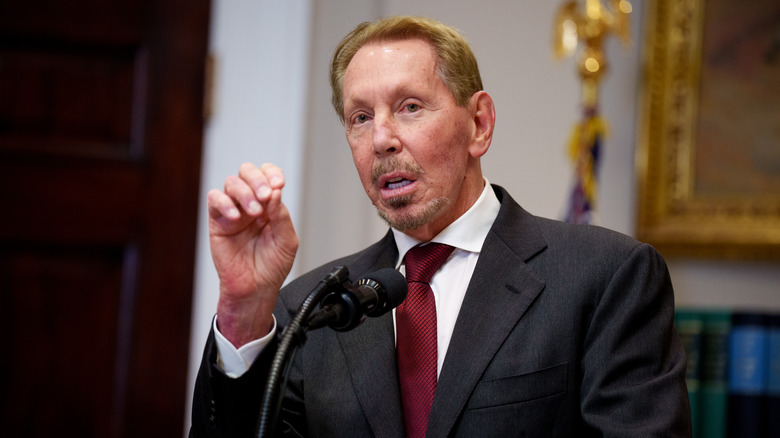10 Millionaires And Billionaires Who Didn't Finish College
Is a college degree indispensable for success? Not quite; it depends on personal circumstances and goals. For instance, ascending the corporate ladder to reach the CEO's office and making tons of money might need a university diploma. In 2023, a Federal Reserve analysis found that a college graduate makes four times more than a high school graduate and 12 times more than a non-graduate. But other roads can also lead to wealth without a college degree. If your ambition is to play the guitar in a heavy metal band, inspire millions by sharing your experiences online, solve common tech challenges, or influence culture with your style, four or five years on campus may not be essential. But that doesn't mean you should not learn. Training, specialized knowledge, relentless practice, and real-world experience remain inescapable.
Some of the world's most celebrated millionaires and billionaires have chosen unconventional paths to pursue their dreams, foregoing university altogether even if they had the means. Many others faced financial distress early in life and couldn't finish; others inherited a large amount of money, while some didn't even complete high school. Despite those challenges, they harnessed unique talents along with an unquenchable thirst for success to achieve extraordinary wealth. Millionaires and billionaires are not born; they are self-made through dedication, resilience, and strategic choices. They also stay wealthy because they protect and grow their fortunes. However, do not confuse success with happiness; they aren't always synonymous. The following list highlights examples of individuals who didn't finish college but followed their ambitions and succeeded.
Matt Mullenweg: $400 million
Matt Mullenweg sits on a fortune of around $400 million, according to Celebrity Net Worth, which stems from his stake in Automattic (the company behind WordPress.com) and investments in companies such as MakerBot, SpaceX, CoinDesk, Calm Web, and Telegram. His father, a computer programmer, introduced young Matt to technology early in his life. In a rare blend, Mullenweg merged his passion for music and love for technology. For example, he used to trade website building for local Houston musicians, such as jazz saxophonist David Caceres, in exchange for saxophone lessons. In 2002, at 18, he enrolled at the University of Houston while using and tinkering with the open-source blogging tool b2/cafelog, developed by Michel Valdrighi.
But when Valdrighi stopped updating b2 in late 2002, Matt published a post expressing his desire to "fork" the platform and continue developing it. Mike Little from the UK replied and offered to collaborate. On May 27, 2003, Mullenweg and Little co-founded WordPress. Two years later, Matt moved to San Francisco to work and integrate WordPress with CNET and created Automattic, Akismet, Gravatar, and VaultPress. In the following years he acquired WooCommerce (2015), Tumblr (2019), and Beeper (2024). Apart from becoming a self-made millionaire, a feat in itself, Mullenweg's relevance lies in the creation of WordPress. For those not familiar with this company, WordPress is the platform that powers around 43% of the web, hosting huge sites for The New York Times and Sony Music, for instance. It's likely that many of the websites you visit are indeed powered by WordPress.
Kanye West: $400 million
Kanye West's fortune is a contested issue. He insists that his wealth is $2.7 billion, but Forbes estimates it at $400 million. The disparity is rooted in Kanye's belief in the future value of his Yeezy brand, while Forbes relies on existing assets. Anyhow, $400 million is still a lot. Following high school, West attended Chicago State University but dropped out at 20 to pursue music. In the early 2000s, West became a visionary producer for Jay-Z's label, pioneering a "chipmunk soul" style that defined Jay-Z's classic album The Blueprint. Despite his success, the label didn't want to place West behind a microphone.
In October 2002, after suffering a near-fatal accident that shattered his jaw, West recorded his debut single, Through the Wire, just two weeks later. On February 10, 2004, Kanye dropped his first commercially triumphant album, The College Dropout, which defied expectations and established him as a major force in hip-hop. But West's ambitions extended beyond music. In April 2009, he launched the Nike Air Yeezy 1, followed by the unveiling of the luxury sneakers Louis Vuitton x Kanye West collection in July. After a public fallout with Nike, West signed with Adidas, leading to the release of Yeezy's collection combining sneakers, apparel, and dystopian minimalistic streetwear. West's expansion seemed unstoppable but proved fragile. In October 2022, Adidas terminated the contract after West made a series of hateful remarks, stripping West of his billionaire status overnight. That's why he's on this list as a millionaire.
Jack Dorsey: $4.5 billion
Jack Dorsey's fortune, $4.5 billion according to Forbes, mainly stems from his shares in Block Inc. (formerly Square) and the almost $1 billion he received from the sale of Twitter in 2022. In youth, Dorsey was fascinated by the systems that make cities work; though not just a hobby. By age 15, while in high school, he'd already written dispatch software for taxicab companies. Dorsey's higher education was far from conventional. After attending the University of Missouri-Rolla to study computer science, he went to New York University but dropped out shy of graduating to pursue his ambitions in the early 2000s. While working as a freelance software engineer at Odeo (a podcasting startup), he came up with the idea of a "status update" platform: a simple service where users could share short, real-time messages.
This resulted in the birth of Twitter, with Dorsey sending the world's first tweet, "just setting up my twttr," on March 21, 2006, at 9:50 Pacific Time. Soon after, the platform soared as celebrities Oprah Winfrey, Ashton Kutcher, and Barack Obama joined, bringing millions of users. Speaking of which, Kutcher became the first to reach 1 million followers. In 2009, Dorsey co-founded Square as a tool to receive credit and debit card payments — later on contactless payments like Apple Pay and Google Pay too. It revolutionized payment processing by turning any smartphone into a cash register for small businesses. This evolved into a fintech ecosystem that includes point-of-sale technology, invoicing and payroll, Cash App, business loans via Square Capital, and cryptocurrency trading.
Ralph Lauren: $11.9 billion
Forbes estimates Ralph Lauren's wealth at $11.9 billion, which results from his self-invention and identity. Born on October 14, 1939, as Ralph Rueben Lifshitz, he changed his surname to Lauren at 16 in an act of self-branding. As a teenager with a clear ambition, he wrote "millionaire" as his main goal in the 1957 high school yearbook. He started a business degree at Baruch College but dropped out after two years because studying just didn't suit him. He was more "into dreams and style." With no formal training in fashion design, Lauren took a sales job at Brooks Brothers and at a tie company. In 1967, while working for Beau Brummell, Lauren launched his own line of wide, colorful neckties — a radical move for the time — branding them "Polo," a name chosen because of the elegance of the sport.
His ties were an immediate sensation, with Bloomingdale's selling $500,000 worth in the first year. This success fueled a rapid expansion. To illustrate, Lauren launched a full men's collection in 1968, followed by opening the first-ever in-store designer boutique in 1970. In the same year, he opened the first freestanding store on Rodeo Drive, and in 1972, the signature mesh Polo shirt debuted, becoming a global emblem. Lauren then extended his dominion to fragrances, home furnishings, and international retail. His company held its initial public offering (IPO) in 1997, raising around $767 million – a staggering figure at the time for a fashion brand. Lauren stepped down as CEO in 2015 but remains as Executive Chairman and Chief Creative Officer.
Gina Rinehart: $30.3 billion
Gina Rinehart was born in Perth, Australia, on February 9, 1954. Her father rose to riches when, in 1952, he discovered a huge high-grade iron ore deposit in the Pilbara region. Everything looked okay for the family, but when her father passed away, Gina, a 38-year-old single mother, inherited the business, only to find that it carried a large debt load. On her official website, she said that "it was extremely difficult in those years," adding, "I felt that my nose was only just above water level." She had started a degree in economics at the University of Sydney but never finished. Thus, in just a short period, she was forced to learn and master cost cutting, bank negotiation, and fresh ore body hunting.
A year later, Rinehart secured the vast Roy Hill tenements in Western Australia's Pilbara and spent most of the 1990s persuading Asian steelmakers to invest massively in a functioning mine. Years passed, and by 2014 she'd closed a $7.8 billion debt-and-export-credit package and told Reuters that the first ship would sail before Christmas 2015. That inaugural cargo transformed Rinehart into the only woman on earth to own, build, and operate a mega mine. Her accomplishments earned her the Officer of the Order of Australia in 2022 for "distinguished service to the mining sector." As reported by The Guardian, in 2024 her company's assets had accrued $40 billion AUD ($26.45 billion), with profits topping $5 billion AUD ($3 billion). Regarding Rinehart's wealth, on February 13, 2025, Forbes calculated her fortune at $30.3 billion as of July 2025.
Gautam Adani: $67.6 billion
Gautam Adani's fortune has gone through a real rollercoaster. By August 2022, he was crowned Asia's first centi-billionaire. But it was short-lived. In 2023, a scandalous report by US Hindenburg Research alleging stock manipulation and describing Adani's empire as "the largest con in corporate history" resulted in more than $100 billion being wiped from Gautam Adani's companies, as reported by The Guardian on February 3, 2023. And in November 2024, as per The Guardian, a US indictment claimed that Adani executives participated in a $250 million scheme to bribe Indian officials to secure energy contracts. A roller coaster indeed. Now apparently stabilized, his wealth is valued at $67.6 billion, as per Forbes.
Unfolding his life, Adani came from Gujarat, India, and cleared his own path when at 16 he left university to embark on a train to Mumbai with only a few hundred rupees. Once there, he worked as a diamond sorter. After earning a juicy commission of 10,000 rupees, Adani returned to his hometown in 1981 to support his brother in the plastic business. The mission involved importing polyvinyl chloride (PVC). That was Adani's "Aha!" moment. He realized that manufacturing proved less profitable than trading. After several years, he launched Adani Exports (now Adani Enterprises). The pivot from trader to nation-builder happened in 1995 when he won a government tender to develop Mundra, a remote coastline on the Gulf of Kutch. Against all odds, Adani transformed Mundra into India's largest and most advanced commercial harbor. From then on, Adani's empire broke into green energy, airports, data centers, defense production, and more.
Michael Dell: $128.3 billion
As of July 2025, Forbes estimates Michael Dell's wealth at $128.3 billion. His fortune arises from a 43% stake in Dell Technologies, 22.2 million shares in Broadcom, and also from his investment firm DFO. Fascinated by technology, he got his first calculator at seven and disassembled an Apple II computer at 15 to understand its mechanics. When Michael Saul Dell was a teenager, his mother, a stockbroker, instilled in him the value of education and ambition — and it worked. At 16, he earned $18,000 in a year selling newspaper subscriptions to newlyweds. In 1983, he enrolled at the University of Texas as a pre-med student but dropped out a year later to focus on his promising computer business — he'd sold $80,000 in PC upgrade kits made in his dorm.
Moving to 1984, Dell founded PC's Limited, renaming it Dell Computer Corporation in 1987. The company first listed on the stock exchange in 1988, raising $30 million, and by 1992, Dell, at 27, became the youngest CEO of a Fortune 500 company. Dell Inc. pioneered online sales in 1996, hitting $1 million daily by 1997, and emerged as the largest PC maker by 2001, surpassing Compaq with a 12.8% market share. In a bold move in 2016, Dell acquired EMC Corporation for $67 billion, forming Dell Technologies, a leader in IT infrastructure. But tech isn't Dell's only source of income. Through DFO Management, founded in 1998, he manages stakes in hotels like the Four Seasons Maui, Applebee's, and IHOP, among others.
Bill Gates: $117 billion
Bill Gates's story involves luck and smart moves. At the exclusive Lakeside School, Gates and his old schoolmate Paul Allen gained access to a Teletype Model 33 ASR terminal, which unlocked their obsession for programming. To hone their skills, they solved errors in the school's computers and even programmed a class scheduling system. In 1973, Gates entered Harvard University. But when Bill and Paul saw an Altair 8800 microcomputer on the cover of April's Popular Electronics magazine, they decided to launch "Micro-soft," and Gates dropped out of Harvard. After creating and selling a BASIC programming language interpreter, both moved to a shabby Albuquerque office. A giant leap occurred in 1980 when IBM approached Microsoft for an operating system. Gates struck a deal but insisted on retaining the rights.
But Microsoft didn't have an operating system to sell. So, Gates bought the QDOS (Quick and Dirty Operating System) from a small Seattle company, rebranded it MS-DOS, and sold it to IBM. With the money from the royalties, Microsoft went public on March 13, 1986, at $21 per share. By 1987, the stock's rise had catapulted Gates, 31, into the world's youngest self-made billionaire, placing him officially in the 1%. The explosive success of Windows 95 appointed Gates the planet's richest person, a title he held for about 25 years. In 2000, Gates handed the CEO role to Steve Ballmer but continued as chief software architect. However, in 2014, he surrendered that position, and in March 2020, he quit the board entirely. As of July 2025, Forbes shows Gates hovering around $116.9 billion.
Mark Zuckerberg: $243.1 - 248 billion
Even if Bloomberg pegs Mark Zuckerberg's wealth at $248 billion, or Forbes at $243.1 billion, Zuckerberg is still among the top five wealthiest people. In his youth, Mark Elliot Zuckerberg showed an aptitude for programming — at age 12 he created a messaging program for his father's dental practice. Excelling at high school, Zuckerberg relocated to the prestigious Philips Exeter Academy to develop his coding abilities. And in 2002, he landed at Harvard University to study psychology and computing. A couple of years later, on February 4, 2004, Zuckerberg and his roommates — Eduardo Saverin, Dustin Moskovitz, and Chris Hughes — launched "The Facebook" (renamed Facebook in 2005), a social network for Harvard students. Within a fortnight, almost half of the campus had enrolled, prompting Zuckerberg to drop out of college, rent a house in Palo Alto, California, and focus 100% on the new venture.
But to expand, Facebook needed capital. A lifesaver, Peter Thiel, PayPal co-founder, committed $500,000 to help the fledgling company reach other Ivy League schools, high schools, and eventually anyone with an e-mail address. Four years later, in 2008, Zuckerberg became the world's youngest self-made billionaire at age 23. After that, Facebook went through the roof. Microsoft invested $240 million, and Facebook began trading publicly in 2012 with a valuation of over $104 billion. Zuckerberg continued expanding the empire, buying Instagram and acquiring WhatsApp for $19 billion in 2014. Facebook rebranded as Meta Platforms in 2021 to focus on the "metaverse" but pivoted again in 2023, redirecting attention to AI to write the next company's chapters.
Larry Ellison: $291.6 billion
As of July 2025, Larry Ellison ranks among the world's three richest individuals, as per Forbes. His fortune derives from his 40% stake in Oracle. And the cash keeps flowing because of his company's aggressive and successful pivot into cloud computing and AI. Ellison's early life predicaments forged his future ambition. Born on August 17, 1944, in New York, he was given up for adoption at nine months old after contracting pneumonia and then raised by his aunt and uncle in Chicago. Larry's academic path was unconventional but pivotal. As a brilliant pre-med student at the University of Illinois — yes, he initially wanted to become a doctor — he dropped out after two years following his adoptive mother's death. In 1966, he enrolled at the University of Chicago, where he discovered computer design but left after one semester there.
Ellison moved to California, and in 1977, with Bob Miner and Ed Oates, he founded Software Development Laboratories (later Oracle), betting on a theoretical academic paper, which described a "relational model" for databases. For many, that theory was commercially impractical, but Ellison made it a reality and profitable. Oracle stepped onto Wall Street in 1986, raising around $31.5 million through its IPO and cementing its place as a tech titan. If you're not familiar with what Oracle does, it builds the invisible backbone of modern business IT. It offers the digital equivalent of concrete, steel, and electricity in a skyscraper.
